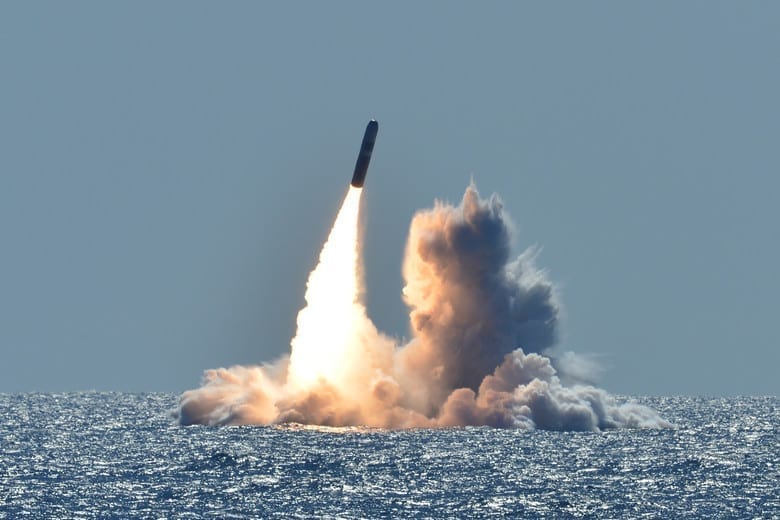
The National Nuclear Security Administration (NNSA) is seeking $53 million in fiscal 2021 for the planned W93 sea-based ballistic-missile warhead: two years sooner than the agency previously thought it would need funding for the weapon.
A spokesperson for the semiautonomous Department of Energy nuclear weapons agency confirmed the figure Thursday morning.
In the 2020 budget request released in March 2019, the NNSA estimated it would first need funding for the W93 – $56 million – in fiscal 2023. In its 2020 Stockpile Stewardship and Management Plan, the agency said the first production unit (FPU) would arrive in 2034. In both documents, the NNSA referred to the proposed weapon as the Next Navy Warhead.
The NNSA spokesperson said the agency “has not committed to a specific FPU date” for the W93.
The NNSA had not publicly released its detailed 2021 budget request at deadline Friday for Nuclear Security & Deterrence Monitor. However, it is requesting $19.8 billion in total for the budget year beginning Oct. 1: nearly a 20% increase over the roughly $16.7 billion Congress appropriated this year.
Nearly all of the increase is for the Defense Programs office that manages refurbishment of nuclear weapons and rebuilding of the U.S. nuclear weapons production complex. The NNSA requested more than $15.4 billion for Defense Programs, or some 25% above the 2020 appropriation.
The NNSA plans “concept and Assessment Refinement activities” for the W93 in 2021, according to a 2021 budget in brief published last week. This early W93 work could include “[r]esearch and development efforts for critical national capabilities, such as fuses and aero shells,” Adm. Charles Richard, commander of U.S. Strategic Command, said last week in congressional testimony.
The NNSA thinks the W93 might cost around $14 billion to complete, according to the 2020 Stockpile Stewardship and Management Plan. The decades-long program to extend the life of an estimated 1,500 W76 warheads cost about $4 billion.
Senior NNSA and Pentagon officials last week confirmed the W93 is the planned tip for the sea-launched ballistic missile that eventually will replace the Trident II D5. The Navy’s planned 12 Columbia-class ballistic missile submarines, which will replace the current fleet of 14 Ohio-class boats starting in the 2030s, would carry the W93 and the Trident replacement into the 2080s.
Officials at both agencies also said the W93 will share technology with a new warhead planned by the United Kingdom, which has a single-leg nuclear arsenal consisting of submarine-based, U.S.-made Trident missiles tipped with Holbrook warheads. The nuclear tips of these missiles are similar to the U.S.-designed W76-1 warhead, according to the Washington-based Federation of American Scientists.
As first reported last week by Nuclear Security & Deterrence Monitor affiliate publication Defense Daily, the W93 would begin life as a ballistic missile warhead but could be designed for rapid upgrades that allow it to ride on other delivery vehicles.
The warhead could also be serviced outside of the NNSA’s Pantex Plant in Amarillo, Texas, where the civilian agency performs nearly all needed tune-ups for deployed warheads, one source said.